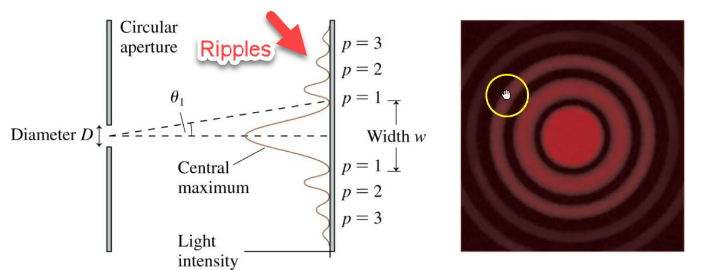Ansys Learning Forum › Forums › Discuss Simulation › Optics › Diffraction theory › Reply To: Diffraction theory
Hi,
Thank you for posting in the forum,
I am giving clarification to the few terms used in the statement.
Pupil with a hard edge: The “pupil” refers to the opening through which light passes in an optical system, like the iris in your eye or the aperture in a camera lens.
“Hard edge” means that the pupil has a clear, abrupt transition from open to closed area. Unlike a blurry or gradual transition, a hard edge has a sharp distinction between where light can pass and where it cannot.
When light passes through an aperture with a hard edge, it diffracts, meaning it bends and spreads out slightly beyond the geometric edges of the aperture. This diffraction creates a characteristic pattern of light and dark areas, called the diffraction pattern.
The “hard edge” of the pupil cannot directly translate into a “hard edge” in its diffraction pattern. Because of the inherent wave nature of light, diffraction creates a smooth, gradual transition between light and dark regions in the pattern, even if the aperture itself has a sharp edge. This transition forms the “ripples” that extend towards infinity.
Hope that Helps.
Akhil



